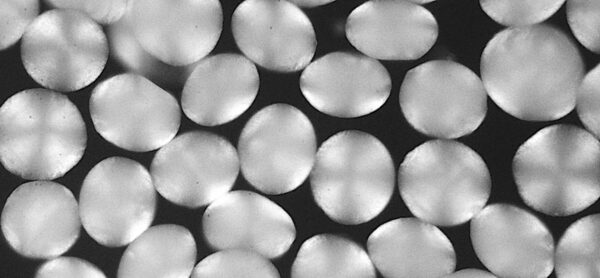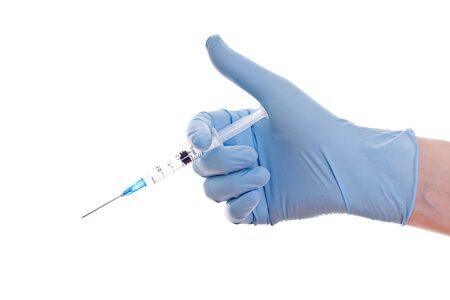Biologics are a critical class of drugs that have revolutionized the treatment of a range of diseases. For example, cancer, autoimmune disorders, and infectious diseases.
Unlike traditional small-molecule drugs, typically administered orally or via injection, biologics are large, complex molecules. They’re usually delivered via injection or infusion. Biologics have shown great promise in treating a range of diseases. However, administering these drugs can be challenging. Many biologics are highly sensitive to temperature and must be kept refrigerated during storage and transportation.
As well as this, administering biologics via injection or infusion can be painful and inconvenient for people. It may require specialized equipment and training.
To address these challenges, researchers at MIT have developed a new platform for administering biologics that could make these drugs more accessible and easier to use: the hydrogel platform. The platform is based on a hydrogel material that can be injected into the body and used to release biologics slowly over time. Let’s learn more about it.
The Hydrogel Platform
The hydrogel platform has been developed by MIT researchers. It consists of a hydrogel material that can be injected into the body and used to slowly release biologics over time. The hydrogel is made from a biocompatible polymer that can be customized to release biologics at a controlled rate.
One of the key benefits of the hydrogel platform is that it can be injected into the body using a standard needle. This method eliminates the need for specialized equipment or training. Additionally, the hydrogel can be stored at room temperature. This method removes the need for refrigeration and makes it easier to transport and distribute biologics.

Potential Applications of the Hydrogel Platform
MIT researchers have developed the hydrogel platform. The hydrogel platform consists of a hydrogel material that can be injected into the body and used to release biologics slowly over time.
- Cancer
- Infectious diseases
- Autoimmune disorders
Cancer
One potential application of the hydrogel platform is in the treatment of cancer. Many cancer drugs are biologics that must be administered via injection or infusion. This method can be inconvenient and painful for people. The hydrogel platform could slowly release cancer drugs over weeks or months, reducing the need for frequent injections or infusions.
Infectious Diseases
Another potential application of the hydrogel platform is in the treatment of infectious diseases like HIV and hepatitis C. Many antiviral drugs are biologics that must be administered via injection or infusion. This can be difficult for people to manage. The hydrogel platform could slowly release antiviral drugs over weeks or months, improving patient adherence and lessening the risk of drug resistance.
Autoimmune Disorders
The hydrogel platform could also be used to treat autoimmune disorders like rheumatoid arthritis and multiple sclerosis. Many biologic drugs used to treat these conditions must be administered via injection or infusion. Again, this can be inconvenient and painful for people. The hydrogel platform could be used to slowly release these drugs over time, improving patient compliance and reducing the need for frequent injections.

Technical Details of the Hydrogel Platform
The hydrogel platform developed by MIT researchers consists of a hydrogel material created from a biocompatible polymer that can be tailored to release biologics at a controlled rate.
The hydrogel is injected into the body using a standard needle. The biologics are released over time as the hydrogel slowly degrades. The hydrogel can be adjusted to release biologics at different rates, depending on the specific drug being delivered and the desired therapeutic effect.
The hydrogel can also be designed to respond to different environmental cues. For example, changes in pH or temperature could be used to control drug release further.
Safety considerations are essential when developing any new drug delivery system. The hydrogel platform has been shown to be biocompatible and well-tolerated in animal studies. Further safety testing will be conducted before the platform can be tested on humans.
Comparison to Other Biologic Drug Delivery Methods
The hydrogel platform is just one of many approaches to delivering biologic drugs.
Other methods include, among others:
- Liposomes
- Nanoparticles
- Monoclonal antibodies
Liposomes are small, spherical particles made of lipid molecules that can encapsulate drugs and protect them from degradation in the body. They’ve been used to deliver a range of biologic drugs, including anticancer drugs and vaccines.
Nanoparticles are similar to liposomes. However, they’re typically made of synthetic polymers or other materials. They can be tailored to release drugs at specific rates and in response to particular stimuli, such as changes in pH or temperature.
Monoclonal antibodies are another method of delivering biologic drugs. Monoclonal antibodies are proteins that can be designed to target specific molecules or cells in the body. They can be used to treat a range of diseases, including cancer, autoimmune disorders, and infectious diseases.
While each of these approaches has advantages and disadvantages, the hydrogel platform offers several unique benefits.
One advantage of the hydrogel platform is that it can be injected using a standard needle, removing the need for specialized equipment or training. Plus, the hydrogel platform can be stored at room temperature, which isn’t always possible with other drug delivery methods.
Economic and Social Impact
The hydrogel platform can potentially have a significant economic and social impact, especially in low-resource settings where access to biologic drugs is limited.
The ease of use and reduced need for refrigeration and specialized equipment could make biologic drugs more accessible to patients in these settings, who may not have access to these types of facilities or equipment.
Additionally, the hydrogel platform could save money for patients and healthcare systems. By reducing the need for frequent injections or infusions, the hydrogel platform could lower healthcare costs and boost patient compliance and outcomes.
Industry Adoption and Competition
The pharmaceutical industry is likely to be interested in the hydrogel platform as a drug delivery method. However, there’s also competition from other drug delivery technologies. For example, liposomes, nanoparticles, and traditional injection and infusion methods.
The success of the hydrogel platform will depend on several factors, including its:
- Safety and efficacy in clinical trials
- Cost-effectiveness compared to other drug delivery methods
- Ease of adoption by pharmaceutical companies and healthcare providers
Environmental Considerations
While the hydrogel platform offers several benefits over traditional drug delivery methods, there are also environmental considerations.
The hydrogel platform could generate more waste than other drug delivery methods. This is because the hydrogel must be removed from the body after it has released its payload of biologic drugs.
Additionally, the manufacturing and disposal of the hydrogel could have an environmental impact. Researchers must carefully consider these factors as they continue to develop and refine the hydrogel platform.
Ethical Concerns
The development and use of new drug delivery technologies also raise ethical considerations. For example, in terms of access to healthcare and the use of animals in drug development and testing.
The hydrogel platform could improve access to biologic drugs for patients in low-resource settings. However, there may still be barriers to accessing these drugs, especially if they’re expensive or require specialized medical facilities or staff.
In addition, the development and testing of the hydrogel platform may involve the use of animals. This can raise ethical concerns for many people.
Researchers must also carefully consider these ethical issues as they continue to develop and refine the hydrogel platform.
Future Directions for the Hydrogel Platform
The hydrogel platform developed by MIT researchers has the potential to revolutionize biologic drug delivery. However, there’s still much work to be done before the platform can be used in clinical settings.
First, the hydrogel platform must undergo extensive testing in clinical trials to demonstrate its safety and efficacy in humans. The platform will also need to be approved by regulatory agencies, like the FDA, before it can be used in clinical settings.
Researchers also need to continue to develop new hydrogel formulations and drug delivery mechanisms to optimize the platform for different types of biologics and therapeutic applications.
Potential Impact of the Hydrogel Platform on Biologic Drug Delivery
The hydrogel platform offers various advantages over traditional drug delivery methods, including ease of use, improved patient compliance, and reduced need for refrigeration and specialized equipment.
While there’s still much work to be done before the platform can be used in clinical settings, the potential power of this technology in treating a range of diseases is exciting and significant. We can’t wait to see how it will develop.
- Learn more about current technological advancements in the medical industry here>>
References
- A shot in the arm. Researchers develop new, patient-friendly hydrogel platform for administering lifesaving biologics, MIT NEWS, 2023
- Bercea, Maria. “Bioinspired Hydrogels as Platforms for Life-Science Applications: Challenges and Opportunities.” Polymers, 2022
- Li, Jianyu, and David J Mooney. “Designing hydrogels for controlled drug delivery.” Nature reviews. Materials, 2016

































